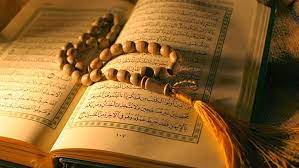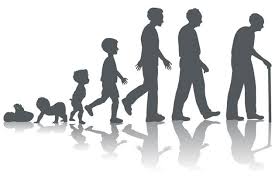Last Thursday, July 11, 18 years after Europe’s worst atrocity since the Second World War, Bosnia reburied another 409 victims of the Srebrenica massacre. Scraps of their bodies from mass graves are continually being identified via DNA analyses.
The Srebrenica massacre refers to the July 1995 systematic massacre of more than 8000 Bosnian Muslims in the town of Srebrenica in Bosnia and Herzegovina during the Bosnia War. The Bosnia war was an international armed conflict that took place in Bosnia and Herzegovina between 1 March 1992 and 14 December 1995. Bosnian Serb forces killed some 8000 Muslim men and boys in five summer days in 1995, towards the end of a war that erupted in 1992 with the collapse of federal Yugoslavia. It claimed more than 100 000 lives. Estimates of the total number of women coordinately raped as a weapon of war range from 20,000 to 50,000.
Ethnic cleansing
The Srebrenica massacre was the culmination of a policy of ethnic cleansing by Mladic’s forces to carve a pure Serb state out of communally diverse Bosnia. Part of the reason behind the conflict in the former Yugoslavia in the 1990s was the religious differences between the Orthodox Christian Serbs, the Catholic Croats, and the Muslim Bosnians. Hatred for the Ottoman Empire who first brought Islam to the Balkans in the mid-to-late 15th century played out in this modern macabre theatre of death. Bosnians – composed of dualists and Slavic tribes living in the Bosnian kingdom under the name of Bosnjani embraced Islam in great numbers under Ottoman rule. By the early 1600s, approximately two thirds of the population of Bosnia was Muslim. Bosnia and Herzegovina remained a province in the Ottoman Empire and gained autonomy after the Bosnian uprising in 1831. Bosnia, along with Albania, were the only parts of the Ottoman Empire in the Balkans where large numbers of people converted to Islam, and remained there after independence. In other areas of the former Ottoman Empire where Muslims formed the majority or started to form the majority, those Muslims were expelled, assimilated by forced Christianization, massacred, or fled elsewhere. Why Bosnia converted en masse to Islam under the Ottoman Empire, while the other Balkan regions – with the exception of Albania, which also became mostly Muslim – remained Christian, was the subject of much academic debate in the wake of the Balkan war that followed the collapse of Yugoslavia in 1991.
After violence had broke out in Kosovo in the 1980’s, nationalism reared. The goal of Serbian nationalists was the centralisation of Yugoslavia. On 13 October 1991 Bosnian Serb leader Radovan Karadzic expressed his view about future of Bosnia and Bosnian Muslims: "In just a couple of days, Sarajevo will be gone and there will be five hundred thousand dead, in one month Muslims will be annihilated in Bosnia and Herzegovina"
"For the Serbs, the desire to degrade, humiliate, and impregnate Bosnian Muslim women with ‘little Chetniks’ was paramount. Women were forced to go full term with their pregnancies and give birth.”
Bosnian Serb wartime leader Radovan Karadzic was arrested in 2008. Serbian President Slobodan Milosevic was arrested in 2001 but died before his trial could be completed.
Before Ratko Mladic’s trial at the International Criminal Tribunal for the former Yugoslavia in The Hague, Netherlands, he drew a finger across his throat in court, a gesture aimed at some of the Srebrenica widows.
At Srebrenica some of the executions after mass herding and separation were carried out at night under arc lights. Industrial bulldozers then pushed the bodies into mass graves. Some were buried alive. Testimony has been heard describing Serb forces killing and torturing refugees at will, streets littered with corpses, people committing suicide to avoid having their noses, lips and ears chopped off, and adults being forced to watch the soldiers kill their children. Dutch officers saw Serb soldiers murder unarmed men with a single gunshot to the head and heard gunshots 20–40 times an hour throughout afternoons.
Survivors relate:
“There was a woman with a small baby a few months old. A Chetnik told the mother that the child must stop crying. When the child did not stop crying, he snatched the child away and cut its throat. Then he laughed. There was a Dutch soldier there who was watching. He did not react at all.”
“I saw yet more frightful things. For example, there was a girl; she must have been about nine years old. At a certain moment some Chetniks recommended to her brother that he rape the girl. He did not do it and I also think that he could not have done it for he was still just a child. Then they murdered that young boy. I have personally seen all that.”
“The women knew the rapes would begin when 'Marš na Drinu' was played over the loudspeaker of the main mosque. ('Marš na Drinu,' or 'March on the Drina', is reportedly a former Chetnik fighting song that was banned during the Tito years.) While 'Marš na Drinu' was playing, the women were ordered to strip and soldiers entered the homes taking the ones they wanted. The age of women taken ranged from 12 to 60. Frequently the soldiers would seek out mother and daughter combinations. Many of the women were severely beaten during the rapes.” — Seventh Report on War Crimes in the Former Yugoslavia: Part II, US submission of information to the United Nations Security Council.
Rebuilding Bosnia after its leaders sat down at an airbase in Ohio in December 1995 and signed the Dayton Peace Accords, is a tetchy process, steeped in ethnic segregation. Ethnic and religious identity is now of much greater social importance in Bosnia than it was prior to 1992. Unemployment is estimated at over 40 % and the refugee crises in the cities is high, those villagers driven out of their homes by Bosnian Serb nationalists.
The new state it brought into being, Bosnia Herzegovina, is divided into two parts: the Republika Srpska (rS) for Serbs, and the Bosnian Federation for Muslims and Croats.
There are now 82 schools in the Bosnian federation, which segregate their pupils. The children are taught their own dialects—Bosniak for Muslims, Croatian for Croats—and their religions separately. Pre-war they identified themselves as Bosnians rather than identifying their ethnicity. Post-war it has been effectively mandatory to be identified as either Bosniak, Serb or Croat and this has been a problem for the children of rape victims.
Recently, EU leaders have welcomed Croatia into the 27-nation bloc. Croatia fought a bitter war against Serb forces during the break-up of Yugoslavia in the early 1990s. It will become the EU’s 28th member, and the second from former Yugoslavia, after Slovenia. EU leaders have also agreed to open accession talks with Serbia, whose EU bid was delayed by a dispute over its breakaway region of Kosovo. EU-Serbia negotiations will begin in January 2014. It remains to be seen whether, Bosnia, slowly lagging behind rebuilding their physical identity, religious identity, and country, after being systematically destroyed and shunned by these same neighbours will ever be welcomed.
Radio Islam Programming
2013.07.18







0 Comments